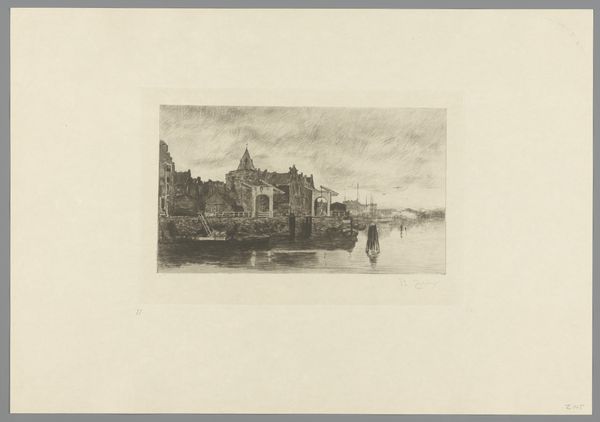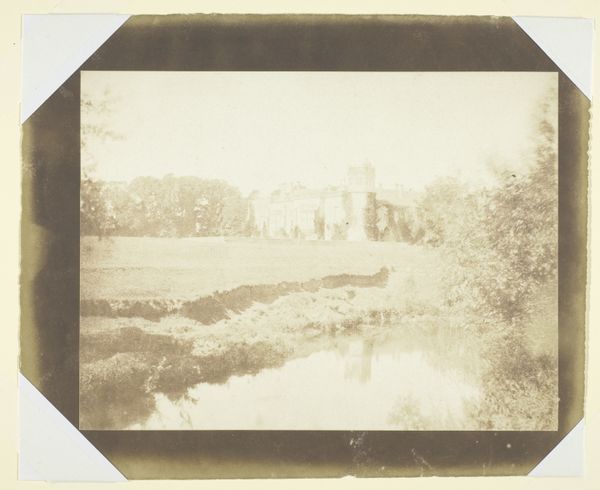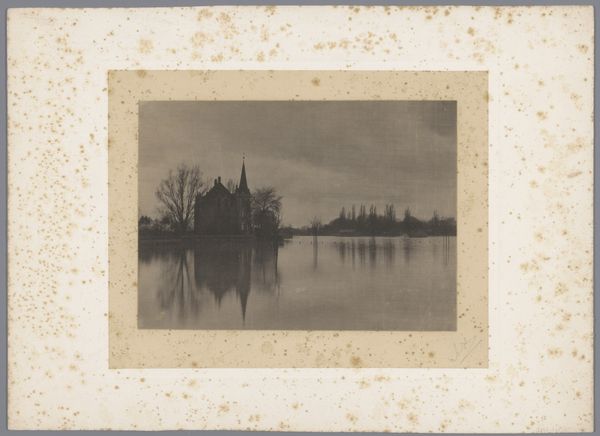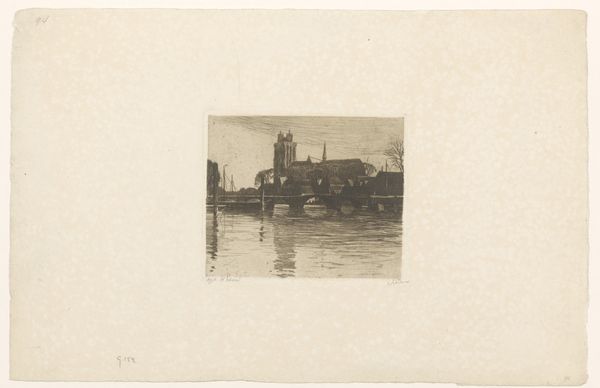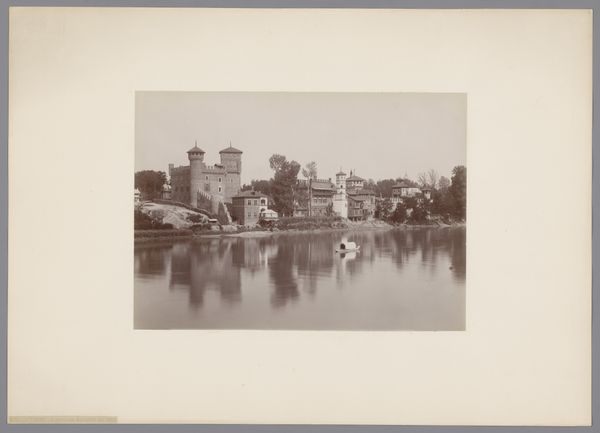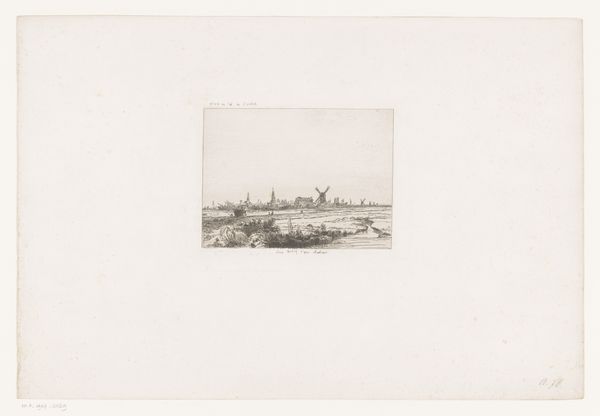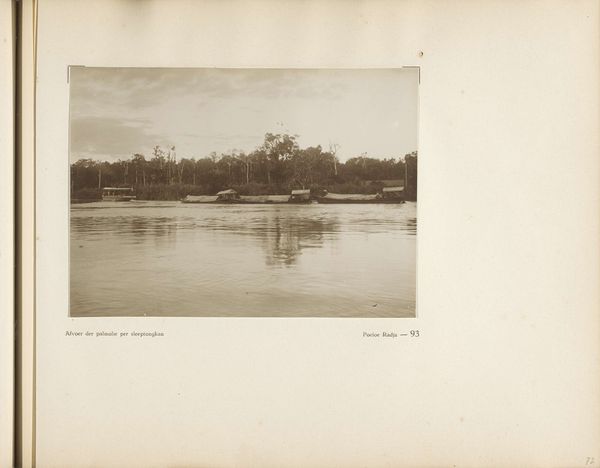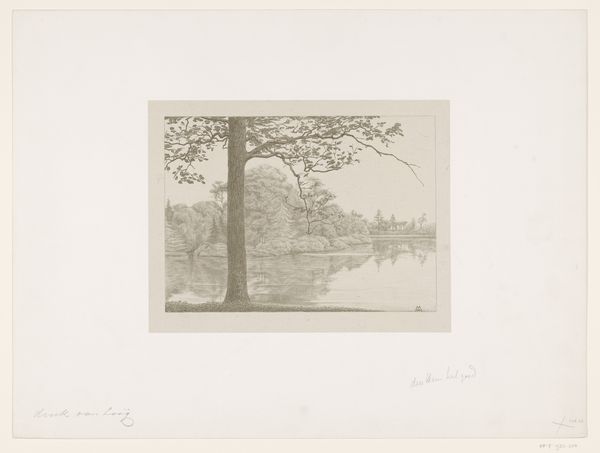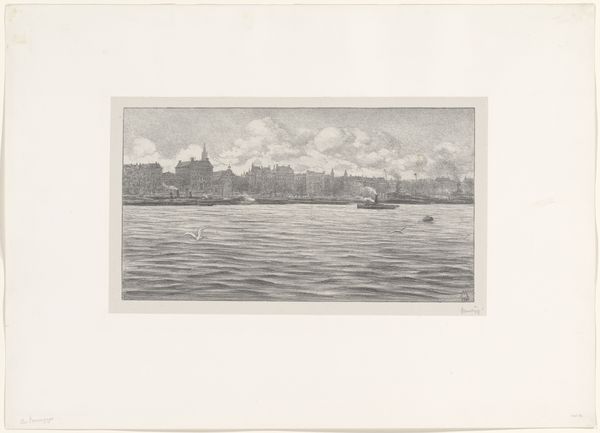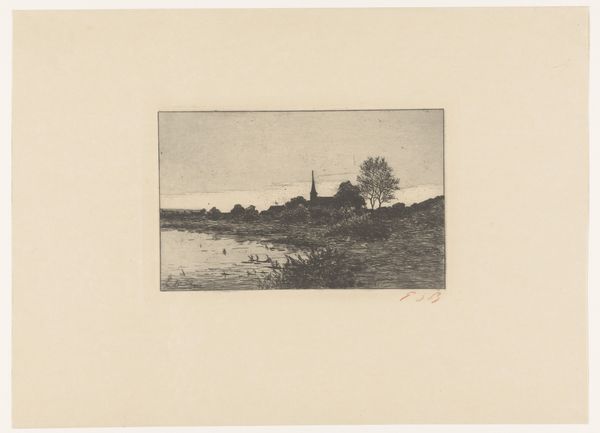
Dimensions: height 129 mm, width 199 mm
Copyright: Rijks Museum: Open Domain
Editor: Here we have "Gezicht op Mantes in de avond," a gelatin-silver print photograph by Achille Darnis, taken sometime before 1896. The scene has such a stillness, the way the water reflects the buildings... what do you see when you look at this work? Curator: I see a tension between industrial progress and the lingering presence of older social structures, captured through the material properties of photography itself. Consider the gelatin-silver process. Its rise coincided with mass production and accessibility in photography, impacting its perceived value compared to painting. Editor: How so? Curator: Well, think about it. Photography became a tool accessible to a broader public, shifting from a specialized craft to a more democratized means of image production and consumption. Does the location itself, Mantes, suggest anything about industrial or economic activity? Editor: Now that you mention it, it could show how urban centers relied on surrounding agricultural areas for resources. Perhaps this photograph shows the influence of industrial production and transport and, at the same time, the traditions of French life at the close of the nineteenth century? Curator: Precisely. It's about unpacking those social layers through the lens of photographic materials and their relationship to the rapidly changing world around them. Editor: That’s given me a totally different way to consider photographic prints. It's interesting how the materials used can reveal the artist’s intention as well as the work's broader economic and cultural impact. Curator: Indeed, questioning those perceived boundaries is the work's strength.
Comments
No comments
Be the first to comment and join the conversation on the ultimate creative platform.


